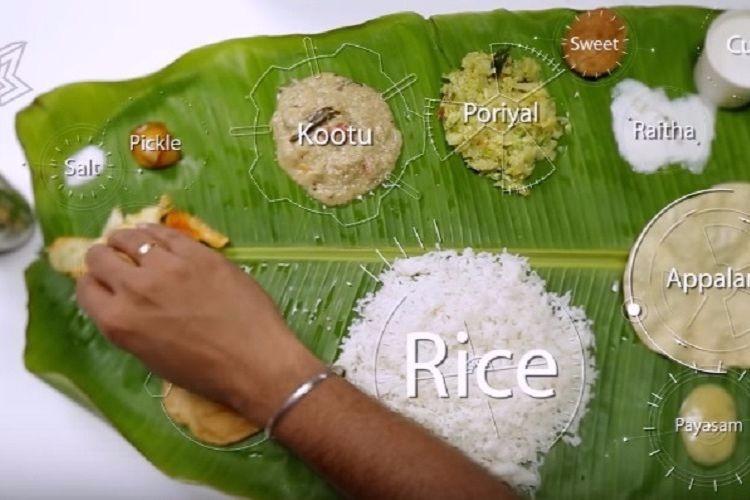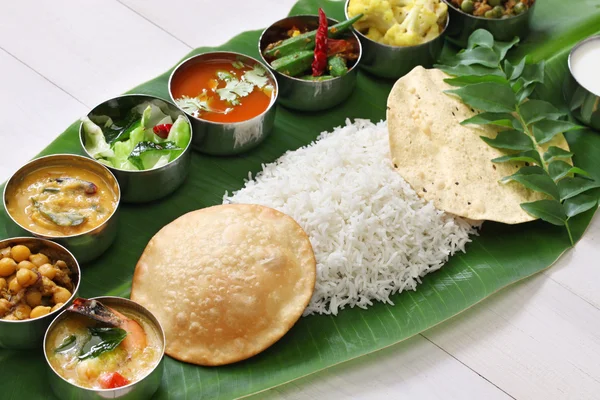Indian cuisine is typically served on banana leaves. These leaves are revered and holy, and prasad is frequently offered to the gods using them. South India has a lovely tradition of presenting food to guests on these leaves during important events and celebrations.
Banana leaves are now commonly used to serve food in many eateries. Nothing beats the satisfaction of dining on a delicious meal on a large, long, greenish-yellow banana leaf.
Let’s examine some of the causes for the continued use of these leaves in southern India as well as the advantages they offer to us.

Banana leaf health benefits:
Banana leaves are widely known for their excellent nutritional value. Banana leaves contain plant-based substances called polyphenols. Especially the polyphenol known as EGCG, or epigallocatechin gallate. Natural antioxidants called polyphenols can be found in a wide range of plant-based meals.
The family of epigallocatechin gallates includes catechin gallate. It is a potent antioxidant and consists of three phenol rings.
Epigallocatechin gallate, which is the primary active component, is also found in green tea leaves. They also have antimicrobial effects and contain vitamin A, calcium, carotene, and citric acid. Eating in a banana leaf has several health advantages.
- Antioxidants abundant
Banana leaves are rich in polyphenols, which are naturally occurring antioxidants. Green tea also contains them, as do many other plant-based foods.
Polyphenols, which are known to protect against several lifestyle diseases, are absorbed by food served on banana leaves. They are also thought to possess antibacterial qualities, which may enable them to eliminate food-borne pathogens. Eating banana leaves has several benefits, including the high amount of beneficial elements, particularly antioxidants, which are one of the key factors in its popularity and widespread use.
2. Financially Sound
Eating food on banana leaves is one of the most economical and affordable options.
You might be able to locate them on the market being sold by the piece or by the kilogram, depending on the quantity you require. You will almost likely be able to obtain bananas for free if you know a banana grower.
Banana leaves are therefore affordable and available to everyone. As a result, food is frequently served on banana leaves during rituals and weddings since the enormous crowds at Indian weddings make it challenging for low-income families to order an excessive amount of pricey plastic dishes.

3. Stops the Transmission of Germs
It is believed that banana leaves have antibacterial qualities that guard against bacteria or germs spoiling food. Additionally, it helps keep your food fresher for longer. As a result, the food on these leaves remains untainted and devoid of pathogens, keeping you secure and lowering your danger of getting sick. It therefore shields you from bacteria and germs.
4. Keeps your food free from chemicals:
The most hygienic way to eat bananas is in banana leaves, which keep your food free of chemicals. Since the utensils we often use are washed with soap, there are always residues of the chemical-filled soap on the dish, and when we eat on that plate, our food absorbs those chemicals.
On the other hand, banana leaves have a waxy layer that deters dirt and dust. You can also wash these leaves in regular water and use them right away.
Eating food on banana leaves will therefore enhance your experience and shield you from a variety of hazardous toxins.
5. Enhance Food Taste:
Fresh banana leaves are covered with a very thin layer of wax. This waxy coating adds flavor to your dish and gives off a pleasant scent.
An edible wax covering with a clear and distinct smell and scent coats the banana leaves.
When hot food is served on banana leaves, the wax melts, enhancing the flavor and enhancing the delectability of the dish.
6. Proper Accommodation:
Banana leaves can be cut into various sizes and placed on any size platter. Banana leaves are larger than the leaves of most plants. Large banana leaves can contain a whole meal in one container.
All of the food available at the feast may be prepared without combining different curries.

7. Eco-Friendly:
On the other hand, because they are non-biodegradable and decompose slowly, plastic and Thermocol plates add to the rising garbage problem. On the other side, banana leaves can be utilized as manure and are safe for the environment.
Make a good decision and switch to banana leaves instead of single-use plastic containers, which are considerably more kind to the environment. They disintegrate in a few minutes.
8. Treats Stomach Issues:
Extracts from banana leaves have long been used to treat diarrhea and dysentery. Studies have demonstrated that banana leaf extracts can treat peptic ulcers.
Banana leaves’ anti-ulcer qualities have been connected to the presence of active substances like anthocyanins, tannins, and flavonoids. Banana leaves can therefore also be helpful in this situation.
9. Skin Nutrition:
Numerous skin diseases have long been treated using banana leaves. Banana leaves are excellent for use in skin creams and lotions because they offer antibacterial and antioxidant characteristics.
Banana leaves can be used to treat burns and wounds. Burn wound dressings made of banana leaves can treat burns, ease pain, and prevent infection.
10. Hair Nutrition:
It is said that banana leaf paste promotes hair development and shine. Green tea and banana leaves both include the chemical epigallocatechin gallate (EGCG), which is also present in banana leaves. The benefits of banana leaves for hair, on the other hand, are not widely supported by studies.






